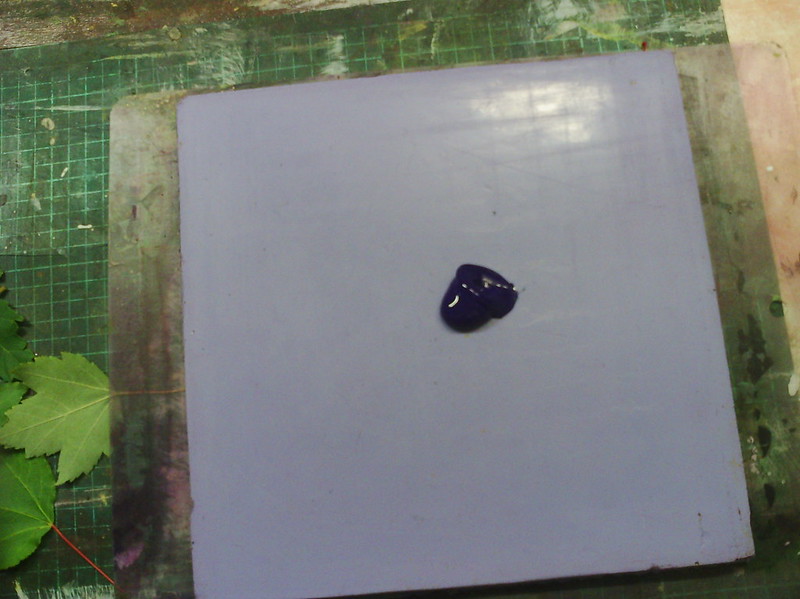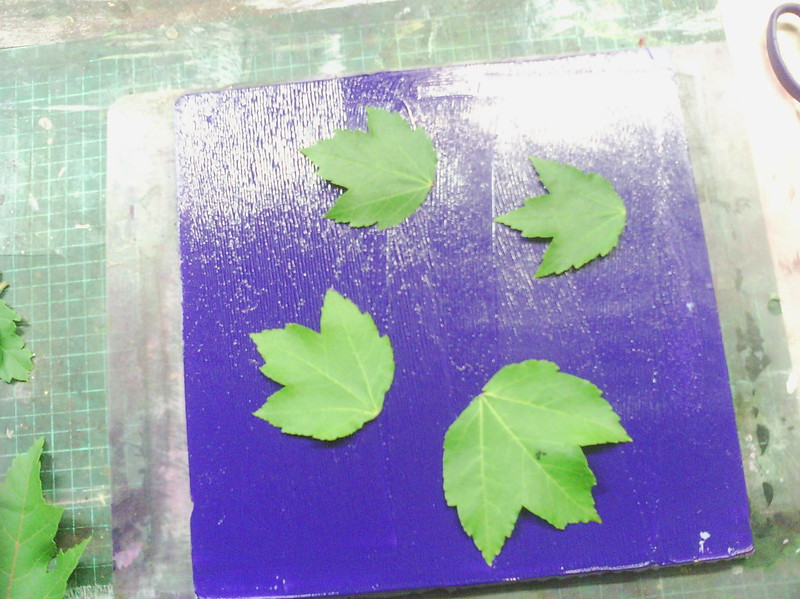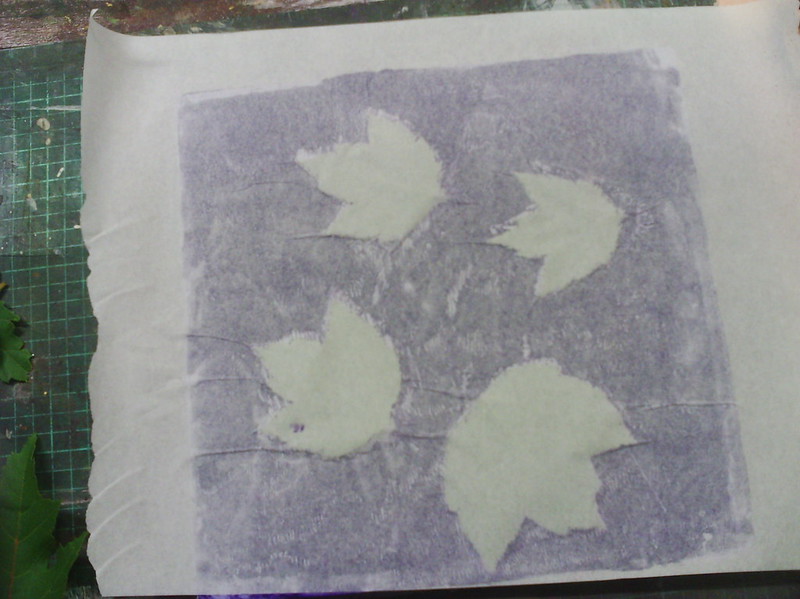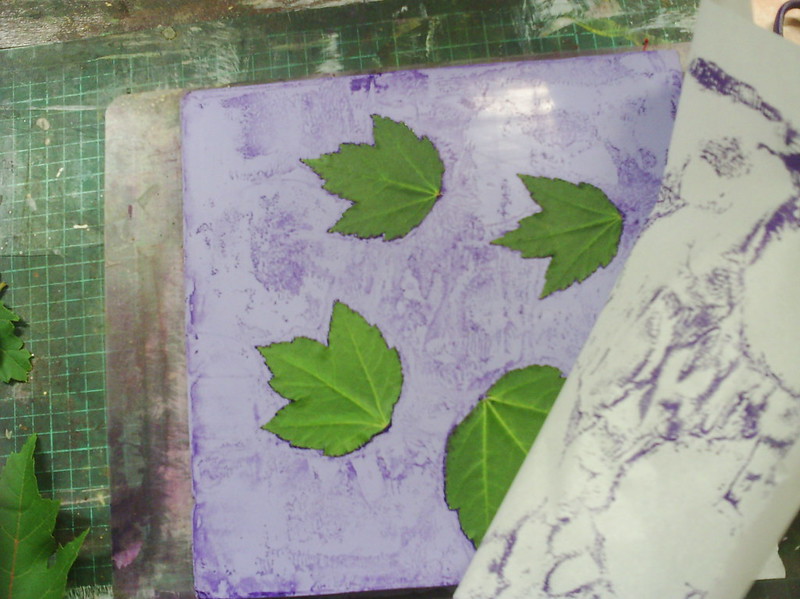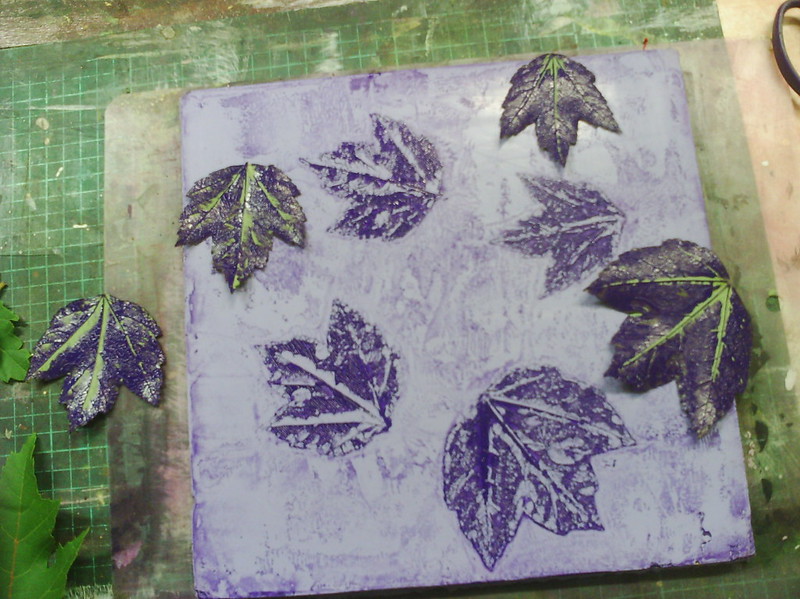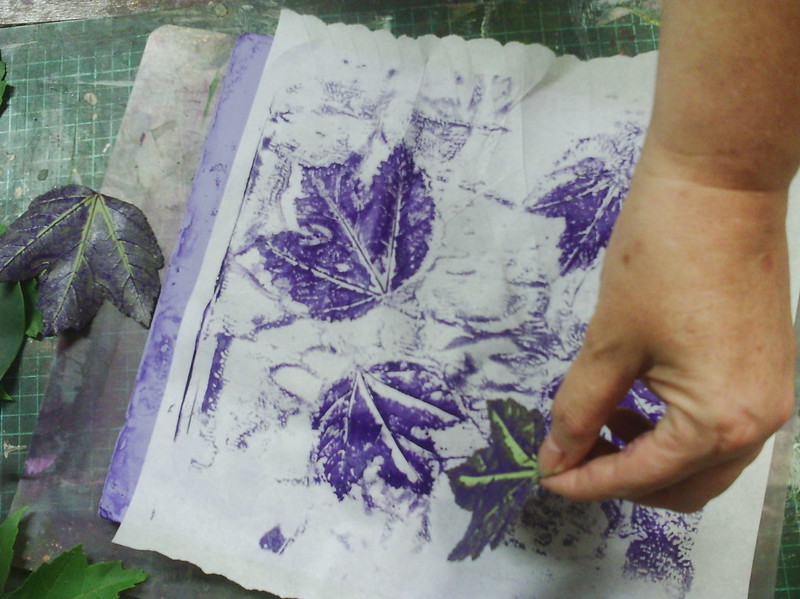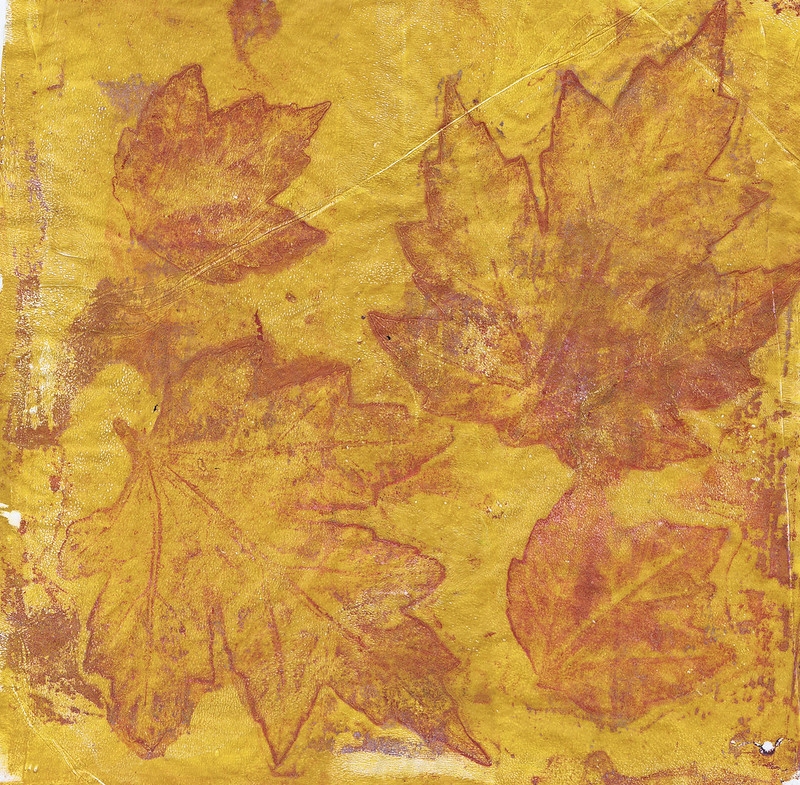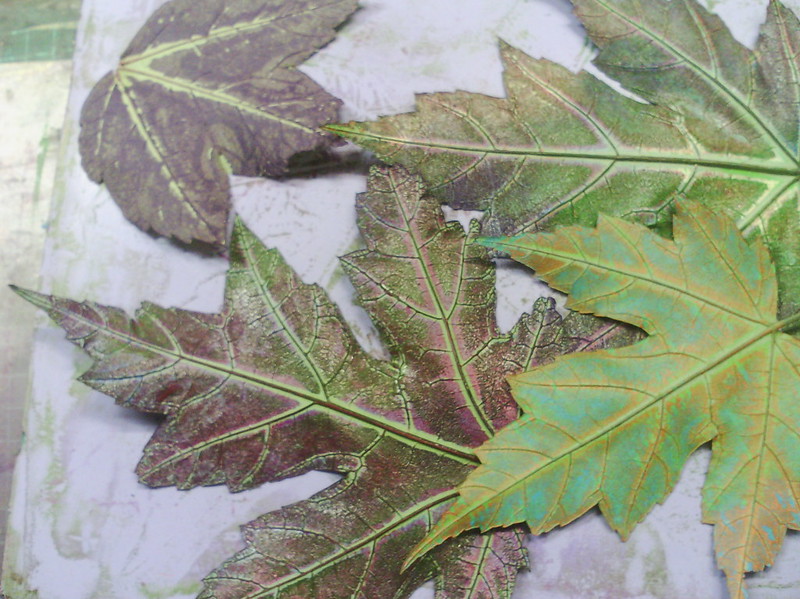I did promise a tutorial for how I printed the Leaves from yesterday
and here it is
Of course you start with some leaves. I like to pick ones which have lots of veins.
You need a plate to print from. Most people use a gelli plate, but this is a plate made from silicon rubber that my husband made for me. He made it from the stuff he uses to make molds for his railways.
I have tried this technique with a plate made from actual gelatin, but to get good prints you need to press hard and I find the leaf veins dig into the gelatin.
The roller is a hard rubber one, which, again, my hubby made for me from an old inkjet printer roller. He is a very ingenious bloke! But you can get these rollers from art suppliers. You can use a decorators dense foam roller from the hardware, it works well, but soaks up a lot of paint, so not only is there waste, it is hard to change colours, which I like to do a lot.
So we add paint. You can do this step on a palette and then apply to the plate, but I am extremely lazy!
Roller out the paint so it is even. I can see already that I have added too much paint. Obviously if you roller onto a palette first, then this is not likely to happen.
When you have an even layer of paint, add the leaves. just place them down lightly, if you press them, you will get fingerprints, later.
I place the leaves bottom, or vein side down, in order to get a better print later.
The next step is to place your paper (or fabric) down and to rub over the surface without moving it. I like to use my hands, so I can feel the edges of the leaves and make sure I get a crisp outline. You can use a clean roller, but I find that the paper can sometimes move and blur the print.
This is the type of print we get at this stage, a negative print. One thing to take into account is the thickness of the paper. The thinner the paper, the crisper the print will be. This, although it is thin, is quite stiff. Also, because I used too much paint it is a bit blobby and there is till paint around the leaves.
What we are trying to do here is remove all the paint from around the leaves.
Because there was so much paint left over, I printed again. This is greaseproof paper, very similar to deli paper, which I often use as it is very thin, so prints very crisply, but also is easy to collage. On the right, you can see there is not much paint left on the plate. What is left is dry and will not move, but hopefully the paint under the leaves is still wet. This is the part of the printing where we get the lovely prints, so I hope so.
On the left above, I removed the leaves carefully, then on the right printed the paint that was left under the leaves.
Because I had too much paint, the leaf prints are not as delicate as some of the ones I showed yesterday, but at least there is good contrast and you can see what happens.
If you are really quick, you can also print the paint off the leaves themselves.
This brings me to the most important part of this process. Speed.
Because we are looking to get the leaf print at the end, we need to do everything very quickly, because the acrylic paint is drying all the time.
If, by chance you get to the end and those beautiful leaf prints have dried on the plate, there is a way that you can (sometimes) get the prints off.
The red/burgundy leaves above were ones that actually had dried on the plate. What I did was to roller over some yellow ochre paint VERY CAREFULLY so as not to disturb the image. Let it sit for a few moments. You may even see the leaf prints melting into the rollered paint, then print, and here, you need to press quite firmly. I must say that this does not always work and requires a bit of practice, but it is possible. One thing to remember is to make sure the two colours contast well!
And when you are finished, I love how all the layers of paint on the leaves looks. I have lots of these, which I have kept and allowed to dry. I am currently looking for a nice big glass bowl to put them in.
Hope you enjoyed this tutorial. I am sure there are other ways to do this, but this is my favourite way.
Oh, and by the way. I do not clean my plate between prints. This allows me to get effects like this above, where the new paint and leftover paint have merged together to give a more interesting leaf.
Happy Creating!




